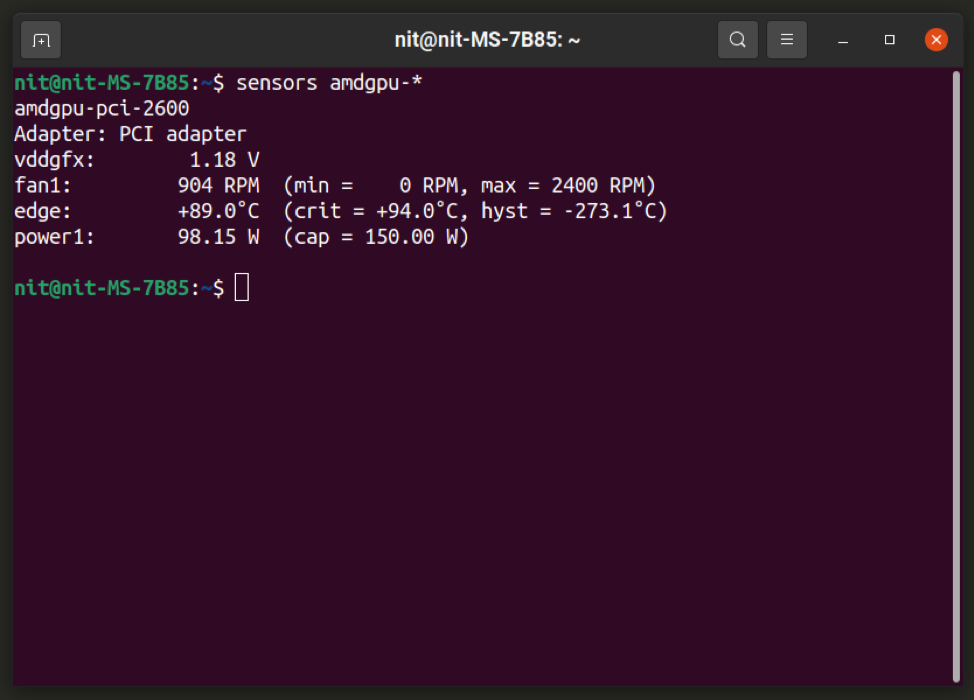

- #Linux amdgpu memory monitor how to#
- #Linux amdgpu memory monitor install#
Next, let’s check what is considered to be a normal operating temperature for most GPUs: Idle: 30° to 45° C (86° to 113° F) Load: 65° to 85° C (149° to 185° F) GPU Rendering: 70° to 80° C (158° F to 176° F)
Replace Heatsink/Fan Setup & Consider Investing In Water Cooling. #Linux amdgpu memory monitor how to#
How To Lower GPU Temperature – Simple Guide
#Linux amdgpu memory monitor install#
to install: sudo apt-get install -y python-pip sudo pip install glances. View your AMD GPU utilization, both for the total activity percent and individual blocks on Linux.įor Nvidia GPUs there is a tool nvidia-smi that can show memory usage, GPU utilization and temperature of GPU….You can use the monitoring program glances with its GPU monitoring plug-in:. It is a ncurses-based GPU status viewer for NVIDIA GPUs similarly to the htop command or top command. Another fancy but very useful tool for NVIDIA GPU. First install the tool, run: $ sudo apt install intel-gpu-tools. Glances is a cross-platform, advanced and popular real-time system monitoring tool that uses the psutil library to gather information from various system resources. Done! How do I monitor GPU temp in Ubuntu?Ĥ Useful Tools to Monitor CPU and GPU Temperature in Ubuntu After promising not to blow up your graphics card if you apply a wild overclock with the tool, you’ll gain access to Wattman, which tracks GPU temperature and other key statistics in graph form. Right-click on the Windows desktop, select Radeon Settings, and then head to Gaming > Global Settings > Global Wattman. Execute sensors command to find out CPU temperature in Ubuntu Linux. Run hddtemp command to see SSD and hard drive temperature in Ubuntu. Install the lm-sensors and hddtemp packages in Ubuntu using the sudo apt install hddtemp lm-sensors. How do I check my CPU and GPU temp Linux? A temperature readout will appear on-screen. To check your GPU’s temperature with Lm_Sensors, open up a terminal window, and write the command sensors in the prompt. 
In other major Linux distributions, you can search for the “lm-sensors” package in the package manager. It can fill the gap for “Radeontop” command line utility that lacks indicators for GPU temperature and fan speed. You can use Lm-sensors to view current temperature and fan speed for your AMD card.






 0 kommentar(er)
0 kommentar(er)
